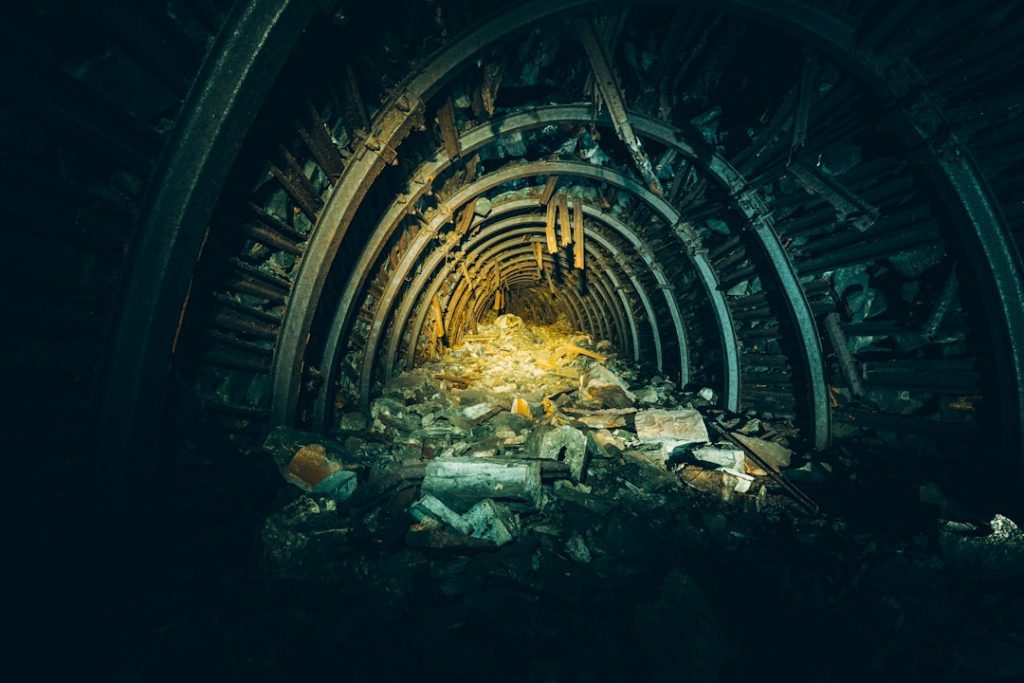Briquettes are compact, compressed blocks of charcoal used as fuel for grilling and barbecuing. They are typically composed of charcoal, coal dust, sawdust, and additional ingredients that promote even and consistent burning. The manufacturing process involves combining raw materials with a binding agent, such as starch, and compressing the mixture into the desired shape using high-pressure equipment.
This method produces a dense, uniform block that is easy to handle and provides extended burn time. Briquettes are valued for their consistent heat output and long-lasting burn, making them a preferred choice for grilling and smoking. They are easily ignited and generate less ash compared to traditional lump charcoal.
Some briquettes are infused with flavorings like hickory or mesquite to impart distinct tastes to cooked food. Briquettes offer a convenient and dependable fuel source for outdoor cooking applications.
Key Takeaways
- Briquettes are compressed blocks of charcoal, made from wood by-products and other natural ingredients.
- When choosing briquettes, look for types with consistent size and shape, minimal ash production, and long burning time.
- Before using briquettes, ensure proper ventilation and avoid using in enclosed spaces to prevent carbon monoxide buildup.
- Lighting briquettes can be done using a chimney starter, electric starter, or lighter fluid, but avoid using gasoline or other flammable liquids.
- Adjust the temperature for different cooking styles by spreading out or stacking the briquettes, and using vents on the grill to control airflow.
- To extend the lifespan of briquettes, store them in a dry place and remove ash buildup regularly.
- Leftover briquettes can be used for deodorizing, as a moisture absorber, or as a base for flower arrangements.
Choosing the Right Briquettes: Types and Qualities to Look for
Material Quality Matters
Look for briquettes made from high-quality materials, such as natural hardwood charcoal and organic binders. These types of briquettes will burn cleaner and produce less ash, resulting in a better grilling experience.
Size, Shape, and Flavorings
Consider the size and shape of the briquettes, as well as any added flavorings or additives that may enhance the taste of your food. This will ensure that your food cooks evenly and thoroughly, without the need for constant adjustments to the heat source.
Burn Time, Heat Output, and Environmental Impact
Another important factor to consider is the burn time and heat output of the briquettes. Look for briquettes that are designed to burn for an extended period of time and provide consistent heat throughout the grilling process. Additionally, consider the environmental impact of the briquettes you choose. Look for products that are made from sustainable materials and produced using eco-friendly manufacturing processes. By choosing high-quality, environmentally friendly briquettes, you can enjoy a great grilling experience while minimizing your carbon footprint.
Preparing Your Grill: Tips for Using Briquettes Safely and Effectively
Before using briquettes in your grill, it’s important to prepare the grill properly to ensure safe and effective cooking. Start by cleaning the grill grates and removing any leftover ash or debris from previous grilling sessions. This will help prevent flare-ups and ensure that your food cooks evenly.
Next, arrange the briquettes in a single layer on the bottom of the grill, making sure to leave space between each briquette to allow for proper airflow. This will help the briquettes burn evenly and provide consistent heat throughout the cooking process. When lighting the briquettes, avoid using lighter fluid or other chemical accelerants, as these can impart a chemical taste to your food and pose a safety hazard.
Instead, use a chimney starter or electric starter to ignite the briquettes quickly and safely. Once the briquettes are lit, allow them to burn until they are covered with a thin layer of ash before adding your food to the grill. This will ensure that the briquettes are at their peak heat output and will provide the best cooking results.
Lighting Briquettes: Methods for Getting the Perfect Heat
| Method | Pros | Cons |
|---|---|---|
| Chimney Starter | Quick and efficient | Requires additional equipment |
| Lighter Fluid | Easy to use | May leave a chemical taste |
| Natural Fire Starters | Environmentally friendly | May take longer to ignite |
There are several methods for lighting briquettes, each with its own advantages and considerations. One popular method is to use a chimney starter, which is a metal cylinder with a handle that allows you to easily light the briquettes without the need for lighter fluid or other accelerants. Simply fill the chimney starter with briquettes, place a piece of crumpled newspaper or a paraffin fire starter in the bottom chamber, and light it with a match or lighter.
The heat from the burning paper will quickly ignite the briquettes, allowing them to reach their peak heat output in just 15-20 minutes. Another method for lighting briquettes is to use an electric starter, which is a heating element that is placed directly in the briquettes to ignite them quickly and evenly. This method is convenient and eliminates the need for lighter fluid or other accelerants, resulting in a cleaner and safer grilling experience.
Additionally, some grillers prefer to use natural fire starters, such as fatwood or kindling, to light their briquettes. These natural materials provide a clean and chemical-free way to ignite the briquettes, resulting in a pure and authentic grilling experience.
Controlling Temperature: How to Adjust Briquettes for Different Cooking Styles
Controlling the temperature of your grill is essential for achieving the perfect cooking results, whether you’re searing steaks at high heat or slow-smoking ribs at low heat. One way to adjust the temperature of your grill is by arranging the briquettes in different configurations. For high-heat cooking, such as searing or grilling burgers, arrange the briquettes in a single layer across the bottom of the grill to create an even heat source.
For low-heat cooking, such as smoking or slow-roasting meats, arrange the briquettes in a two-zone configuration, with all of the briquettes on one side of the grill and an empty space on the other side. This allows you to cook your food indirectly over the empty space, resulting in gentle, even heat that cooks your food slowly and evenly. Another way to control the temperature of your grill is by adjusting the airflow.
Most grills have vents that can be opened or closed to regulate the flow of oxygen to the briquettes, which in turn affects the temperature inside the grill. Opening the vents allows more oxygen to reach the briquettes, resulting in higher heat output, while closing the vents restricts oxygen flow and lowers the temperature inside the grill. By adjusting the vents as needed, you can fine-tune the temperature of your grill to achieve perfect cooking results every time.
Maintenance and Cleanup: Proper Care for Extending the Lifespan of Briquettes

Post-Grilling Cleanup
After each use, allow the briquettes to burn out completely and cool down before disposing of them. This will help prevent flare-ups and ensure that your grill remains clean and safe for future use.
Maintaining Your Grill
Additionally, remove any leftover ash or debris from the grill grates and bottom chamber to prevent clogs and maintain proper airflow during future grilling sessions. To extend the lifespan of your briquettes even further, consider using a charcoal basket or divider to keep them contained and prevent them from spreading out across the bottom of the grill. This will help ensure that the briquettes burn evenly and provide consistent heat throughout the cooking process.
Storing Your Briquettes
Additionally, store your briquettes in a cool, dry place away from moisture and humidity to prevent them from deteriorating over time. By taking these simple steps to care for your briquettes, you can enjoy reliable performance and great grilling results for many cookouts to come.
Alternative Uses for Briquettes: Creative Ways to Utilize Leftover Charcoal
While briquettes are primarily used as fuel for grilling and barbecuing, there are several creative ways to utilize leftover charcoal for other purposes. One popular alternative use for briquettes is as a natural deodorizer for your home or outdoor spaces. Simply place a few pieces of leftover charcoal in a bowl or container and set it in areas where odors tend to linger, such as near trash cans or in musty closets.
The charcoal will absorb odors and help freshen up the space without the need for chemical air fresheners. Another creative way to use leftover charcoal is as a natural fertilizer for your garden or houseplants. Simply crush up some leftover charcoal into small pieces and mix it into your soil before planting or repotting your plants.
The charcoal will help improve soil drainage and retain moisture, while also providing essential nutrients for healthy plant growth. Additionally, charcoal can be used as a natural pest deterrent by placing it around outdoor seating areas or garden beds to repel insects and pests without the need for harmful chemicals. In conclusion, briquettes are a versatile fuel source that can be used in many different ways beyond just grilling and barbecuing.
By understanding how they are made, choosing high-quality products, preparing your grill properly, lighting them effectively, controlling temperature, maintaining them properly, and finding alternative uses for leftover charcoal, you can make the most out of this convenient fuel source while enjoying great cooking results every time you fire up your grill.
FAQs
What are briquettes?
Briquettes are compressed blocks of coal dust or other combustible biomass material such as charcoal, sawdust, wood chips, peat, or paper used for fuel and kindling to start a fire.
How are briquettes used?
Briquettes are commonly used for cooking and heating purposes. They are often used in grills, barbecues, and outdoor cooking stoves.
What are the benefits of using briquettes?
Briquettes are known for their high heat output, long burn time, and low ash content. They are also considered to be more environmentally friendly than traditional charcoal due to their sustainable sourcing and efficient burning properties.
What are the best practices for using briquettes?
Some best practices for using briquettes include ensuring proper ventilation for the fire, allowing the briquettes to fully ignite and reach the desired temperature before cooking, and using the appropriate amount of briquettes for the specific cooking method.
Are there any safety considerations when using briquettes?
It is important to follow the manufacturer’s instructions for safe and proper use of briquettes. Additionally, it is recommended to use briquettes in a well-ventilated area and to keep them away from flammable materials. After use, make sure the briquettes are fully extinguished before disposing of them.



